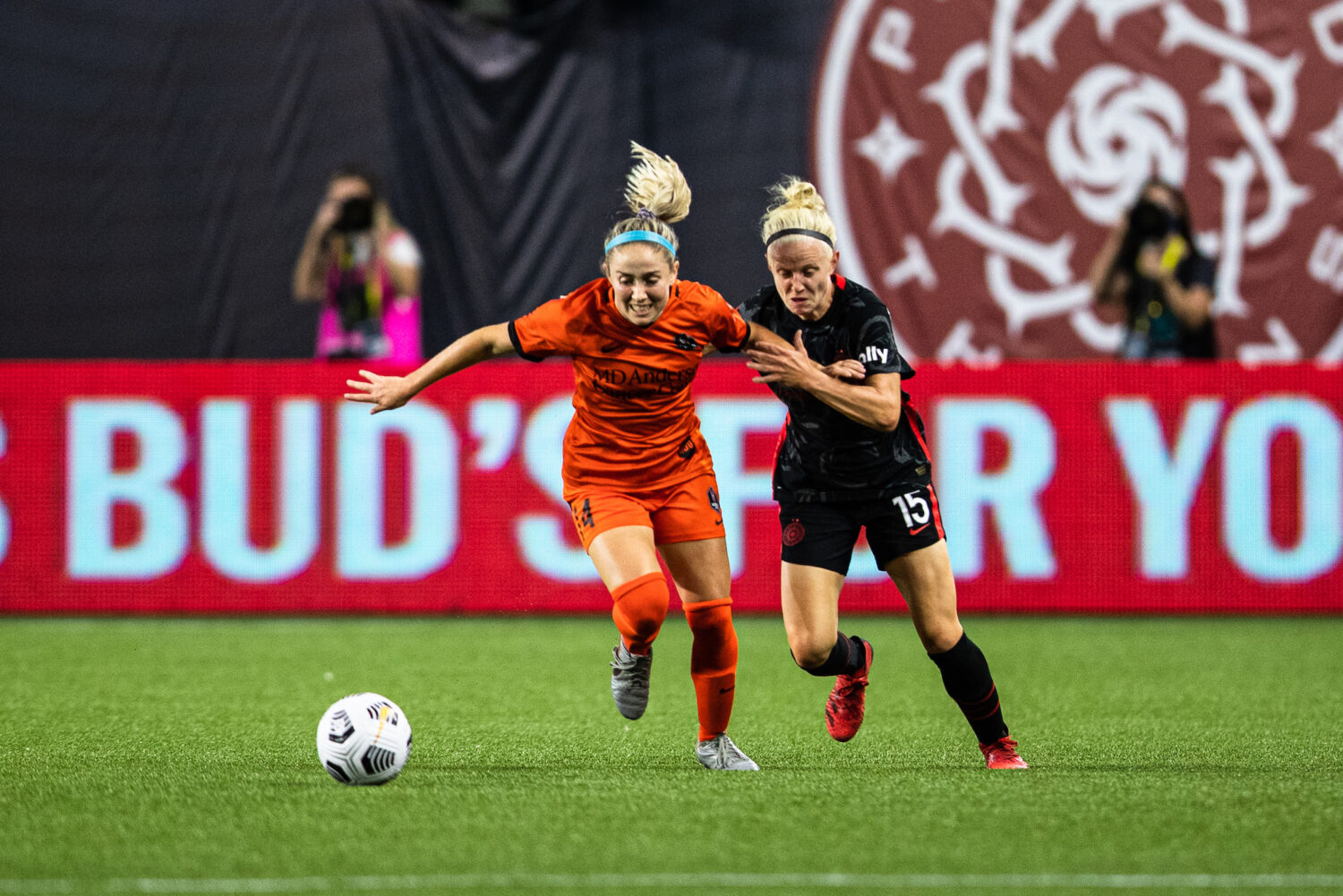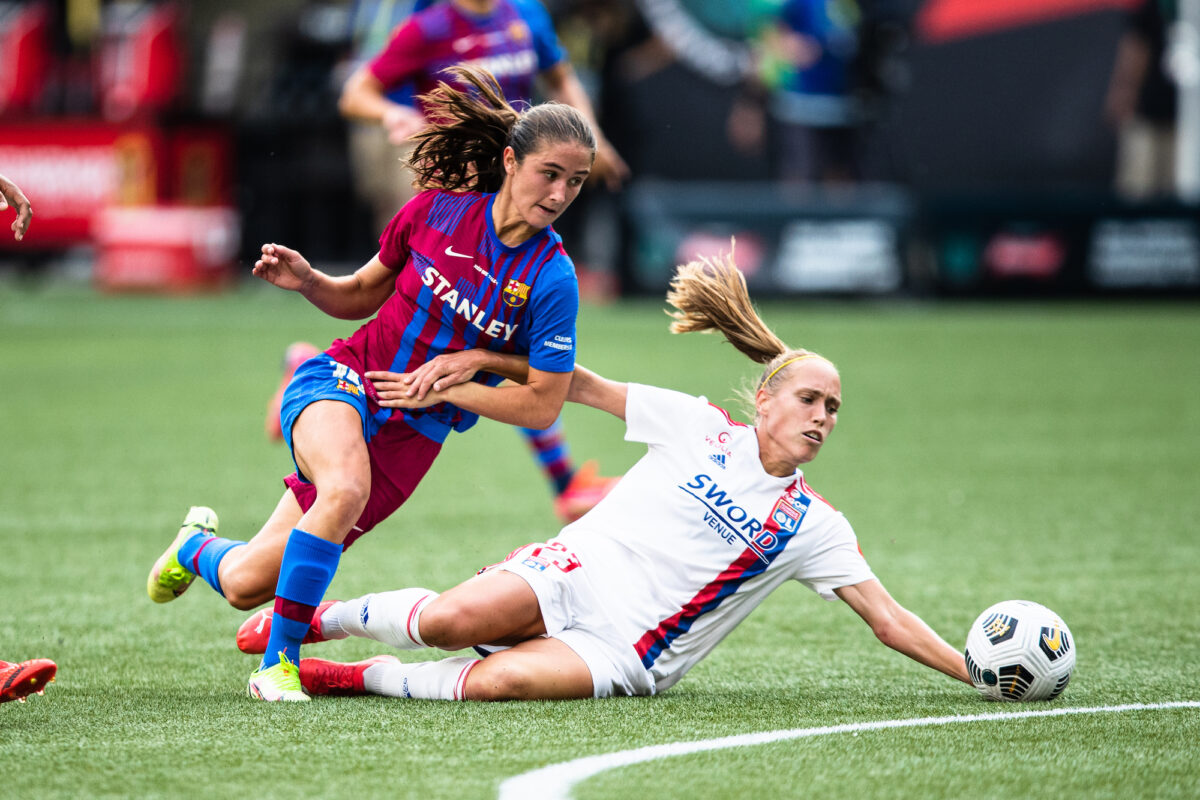In the opening games of the WICC at Providence Park yesterday, Lyon played beat Barcelona 3–2 in an exciting, high-quality match. Later in the evening, the Portland Thorns played the Houston Dash to a 2-2 tie. The match went to penalties, and the Thorns came out on top, beating Houston 3–1 in the shootout.
But I come to you bringing observations of the 90+ minutes of each game, whether you were cheering for Lyonnais, Barcelona, the Thorns, or the Dash.
FC Barcelona vs Olympique Lyonnais
1. Olympique Lyonnais made the most of their back line while countering. With Barça disorganized defensively after attacking, and some of their players spread out to follow their marks, OL opened up to find space immediately, and their back line sent passes up wide or through the middle. This tactic was used in one of Lyon’s attempts on goal late in the first half, which nearly succeeded. Barça’s defense was often unprepared and didn’t anticipate the sudden switch of speed.
2. Barça used their midfield and attacking third to send crosses through Lyon’s defensive line whenever they were caught flat, which happened often during the first half. Lyon was slow to counter at times, allowing Barça to move in for crosses and runs. Because Lyon’s defensive line was often so flat, they were caught having to rush back on defense to adjust for an incoming shot or pass.
3. The two teams’ ball movement differed visibly. Lyon used fluid movement switching from one side to the other and using passes and runs up the sidelines, while Barça attacked more centrally, sending passes straight through the middle, as well as using many more crosses. That difference was pivotal to the result of the game. Lyon’s passes and runs from wide areas helped spread out Barça’s defense and created gaps to allow Lyon players through their lines. On the other end, Barça’s crosses helped them move the ball efficiently when Lyon’s own defense was slow to recover and drop back.

Portland Thorns vs Houston Dash
1. Early on, Portland’s starters struggled with their movement around the field, but gradually settled in as the game continued. The beginning of the match was a little messy, and it took me longer than usual to analyze the teams’ formations and movement, and to gain an understanding of how the two teams were approaching their opponent. As the game progressed, however, the Thorns’ movement improved. Some players started to switch sides to get into more comfortable positions and to confuse any defenders marking them. Forwards Sophia Smith and Taylor Porter, for example, often switched sides. After some of the chaos settled, the Thorns worked their way into the game.
2. The Houston Dash used the width of the field to pressure the Thorns centrally. The Thorns’ 4-1-2-1-2 formation meant they had a lot of players in the central midfield and were able to push several players forward when needed. With the center crowded with Thorns players, Houston had to find an alternative to breaking Portland’s defensive lines. They used the wings on offense, but used their own defensive line to pressure the center of the field and prevent Thorns attackers from getting chances centrally and in Houston’s box.
3. Subs from the Thorns at the beginning of the second half changed things up. With the Dash leading 2–0, a change was needed to at least catch up to the Dash. When Emily Menges, Simone Charley, and Hannah Betfort joined the fray, Charley’s speed meant counter attacks were in order. Bringing the ball forward for attacks more often led to more and more scoring opportunities, including corners—one of which gave the Thorns their first goal.

